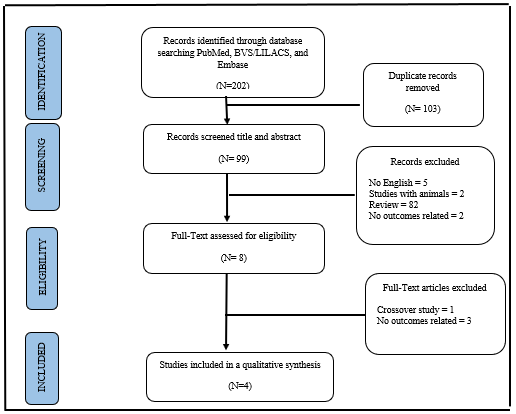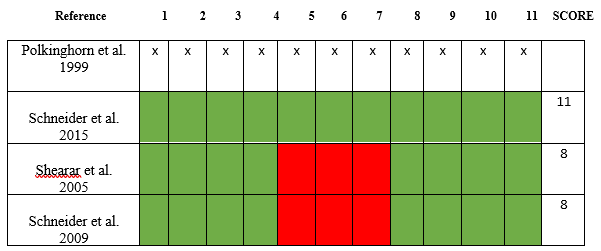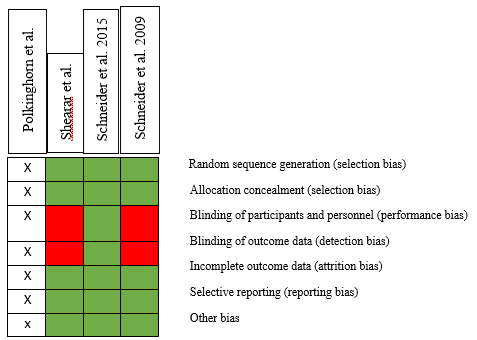Chiropractic Instrumental Manipulation in the Lower Back: A Systematic Review
Introduction
Low back pain (LBP) is defined in the literature as pain located below the ribs that goes to the inferior gluteal folds [1]. LBP is pragmatically classified as non-specific or specific. Nonspecific LBP is defined as low back pain when there is no clear relationship between symptoms, physical findings and imaging findings [2], and represents 90-95% of low back pain cases [3]. The estimated point prevalence of nonspecific LBP is 18% [4], affects people of all ages and is a major contributor to the burden of disease worldwide [5]. As nonspecific LBP has no known pathoanatomical cause, treatment focuses on pain reduction and its consequences [6]. Pain management approaches vary widely [7]. Non-steroidal anti-inflammatory drugs, opioids and neurotropic drugs or steroid injections and surgery are the main tools used in treatment [8]. Another approach method for the treatment of non-specific low back pain is chiropractic instrumental manipulation therapy [9]. This technique is a chiropractic method that uses an instrument to replace the therapist’s hand, being the second most used technique in the world, which provides the same results and benefits as the manual method, with the advantage of being more comfortable and safer for the patient [10]. Chiropractic instrumental manipulation is used by chiropractors for the treatment of acute pain in the lumbar and sacral region [11].
The literature has a limited amount of information about the role of chiropractic in treating LBP. Appropriate and carefully performed manual manipulation of the spine has been used to care for many of these patients [12]. However, depending on the nature and extent of the patient’s pain, the high velocity, low amplitude (HVLA) force of manual manipulation, may present an undesired risk of aggravation or be completely inappropriate [13]. Chiropractic Instrumental Adjustment may offer an adequate and effective therapeutic approach in certain types of these cases due to the low strength and site-specific nature of the manipulative impulses that can be delivered to the spine with a manual adjustment instrument [14]. This instrument allows chiropractors to provide a quick, low strength thrust at specific points [15]. This systematic review aims to assess the result of the instrumental manipulation chiropractic therapy in LBP.
Methodology
Search Strategy
(((Chiropractic[mh] OR Chiropractic[tiab]) AND (Back Pain[mh] OR Low Back Pain[mh] OR Back Pain*[tiab] OR Backache*[tiab] OR Low Back Pain*[tiab] OR Lower Back Pain*[tiab])) AND (Effectiveness[tiab] OR Efficiency[tiab] OR Treatment Outcome[mh] OR Treatment Outcome[tiab] OR Efficacy[tiab] OR Effect*[tiab] OR Assessment[tiab] OR Evaluation[tiab])) AND (English [lang] OR Portuguese [lang] OR Spanish [lang]) AND (“2016/01/01”[PDAT]: “2021/04/20”[PDAT]
Eligibility Criteria
The studies included in this review must:
(i) Use instrumental manipulation chiropractic therapy,
(ii) Written in English, Spanish, and Portuguese, and
(iii) That speak of the Low back pain. Excluded articles that were duplicates, comments, letters, abstracts of congresses, books, book chapters, systematic reviews, and meta-analyses or narrative reviews and that do not use instrumental for manipulation. Also besides, articles that do not address pain in the low back spine.
Methodological Quality
The methodological quality of the articles assessed using the PEDro scale (Physiotherapy Evidence Database) which tests the effectiveness of therapy interventions. On this scale, there are 10 criteria established based on an “expert consensus” and not on empirical data. The score awarded only when a criterion is satisfied. Publications with a score of seven or more on the PEDro scale considered to be of ‘high’ methodological quality, those with a score of five to six would be of ‘regular’ quality, and a score of four or less classified as “poor” quality [16].
Risk of Bias
The risk of bias was assessed in the studies selected according to the Cochrane risk of the bias assessment tool [17]. According to the instrument, for each work, different domains related to the risk of bias were assessed independently.
Case Report (CARE)
The CAse REport (CARE) guidelines checklist is structured to correspond with key components of a case report and capture useful clinical information. This 13-item checklist provides a framework to satisfy the need for completeness and transparency for published case reports [18].
Results
A total of 202 studies were identified through a database search and, after the removal of duplicates, 99 studies were identified. During the screening process, 189 publications were excluded for not being related to the research question and the full text of nine studies was reviewed in detail. Finally, four randomized control studies were included in the systematic review. The selection process is schematized in (Figure 1). The included studies had a mean score of six when assessing the methodological quality with the PEDro scale (Figure 2), with a minimum of 5 points and a maximum of seven, evidencing moderate methodological quality. Detailed description and results of the included studies are presented in Table 1. All studies [19-21] were designed as randomized controlled trials. The risk of bias of included studies was assessed with the Cochrane risk of bias tool (Figure 3). To analyze the case study article, we used The CAse REport (CARE) guidelines checklist (Figure 4).
Figure 2:
(1) Methodological quality assessment of the included studies with PEDro scale.
(2) Subjects were randomly allocated to groups (in a crossover study, subjects were randomly allocated an order in which treatments were received);
(3) Allocation was concealed;
(4) The groups were similar at baseline regarding the most important prognostic indicators;
(5) There was blinding of all subjects;
(6) There was blinding of all therapists who administered the therapy;
(7) There was blinding of all assessors who measured at least one key outcome;
(8) Measures of at least one key outcome were obtained from more than 85%; of the subjects initially allocated to groups;
(9) All subjects for whom outcome measures were available received the treatment or control condition as allocated or, where this was not the case, data for at least one key outcome was analyzed by “intention to treat”;
(10) The results of between-group statistical comparisons are reported for at least one key outcome;
(11) The study provides both point measures and measures of variability for at least one key outcome. The Polkinghorn et al. 1999 as a case study, it does not fit this criterion.
Figure 3: Risk of bias summary: authors assessment for each risk of bias criterion. The Polkinghorn et al. 1999 as a case study, it does not fit this criterion.
Discussion
The aim of this review was to analyze the results of the treatment of patients with pain in the lower region of the spine (lumbar, sacroiliac and coccyx) using chiropractic instrumental manipulation technique. For this, we selected a case study [21], a cohort study, a randomized trial and a randomized clinical trial [21]. The Polkinghorn et al. because it is a case study, it was not evaluated using the PEDro methodological quality scales and the Cochrane risk of bias tool. The other three articles were evaluated and their methodological quality by the PEDro scale obtained a score of 8 and 15 for Schneider et al. 2015. Due to the risk of bias, Schneider et al. Obtained the low-risk result, and the other 2 articles obtained a medium risk of bias with a score of 7. In CAse REport (CARE) guidelines, Polkinghorn et al. got a good evaluation with a score of 12. Although there are several articles [22-24] in the literature that present studies on this technique, there is still a need for more research on this method. In this review, we were able to assess that in terms of clinical efficacy, chiropractic instrumental manipulation found statistically positive results for pain, although the differences between the protocol and the application of the technique were not the same in the four studies addressed. In summary, the articles that investigated the use of the instrument in manipulation only reported that it brought clinically significant benefits to patients. The results of this study may provide useful information for clinicians and patients in terms of therapeutic efficacy for treating patients with back pain without the risk of manipulation of the lumbar spine, sacro-coccygeal.
For more Articles on: https://biomedres01.blogspot.com/






No comments:
Post a Comment
Note: Only a member of this blog may post a comment.